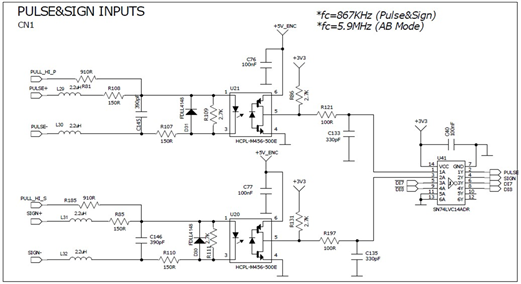Other Parts Discussed in Thread: UCC44273, UCC27517
Hello Dear All,
I am using "SN74LVC14ADR" in my desings, and I realized something. In my designs SN74LVC14ADR is not enough for long term because of the my pin Amper. I think that too much amperage was applied to the input pins of the SN74LVC14ADR in my circuit, because after my circuit worked for a long time, I noticed that the SN74LVC14ADR outputs were broken, and when I changed the SN74LVC14ADR I was using and installed a new one, I saw that the problem was resolved. To prevent this, I temporarily put current limiting resistors in front of the pins. Can you recommend me a more durable IC with the same features as SN74LVC14ADR?
Best


